When to Cycle in Greece
Ride with the rhythm of the Greek seasons — from spring bloom to golden autumn, discover when sunshine, calm winds, and open roads align best.

Quick Links
With its long sunny days, mild winters, and ever-changing scenery, Greece offers one of Europe’s longest and most flexible cycling seasons. Choosing when to ride depends on what you want most—lush spring landscapes, calm island roads, or golden autumn light.
What to Know at a Glance
- Cycling season: March to November — one of Europe’s longest
- Best overall months: April–June and September–October for mild weather and fewer crowds
- Average highs: 20–32 °C, depending on region and altitude
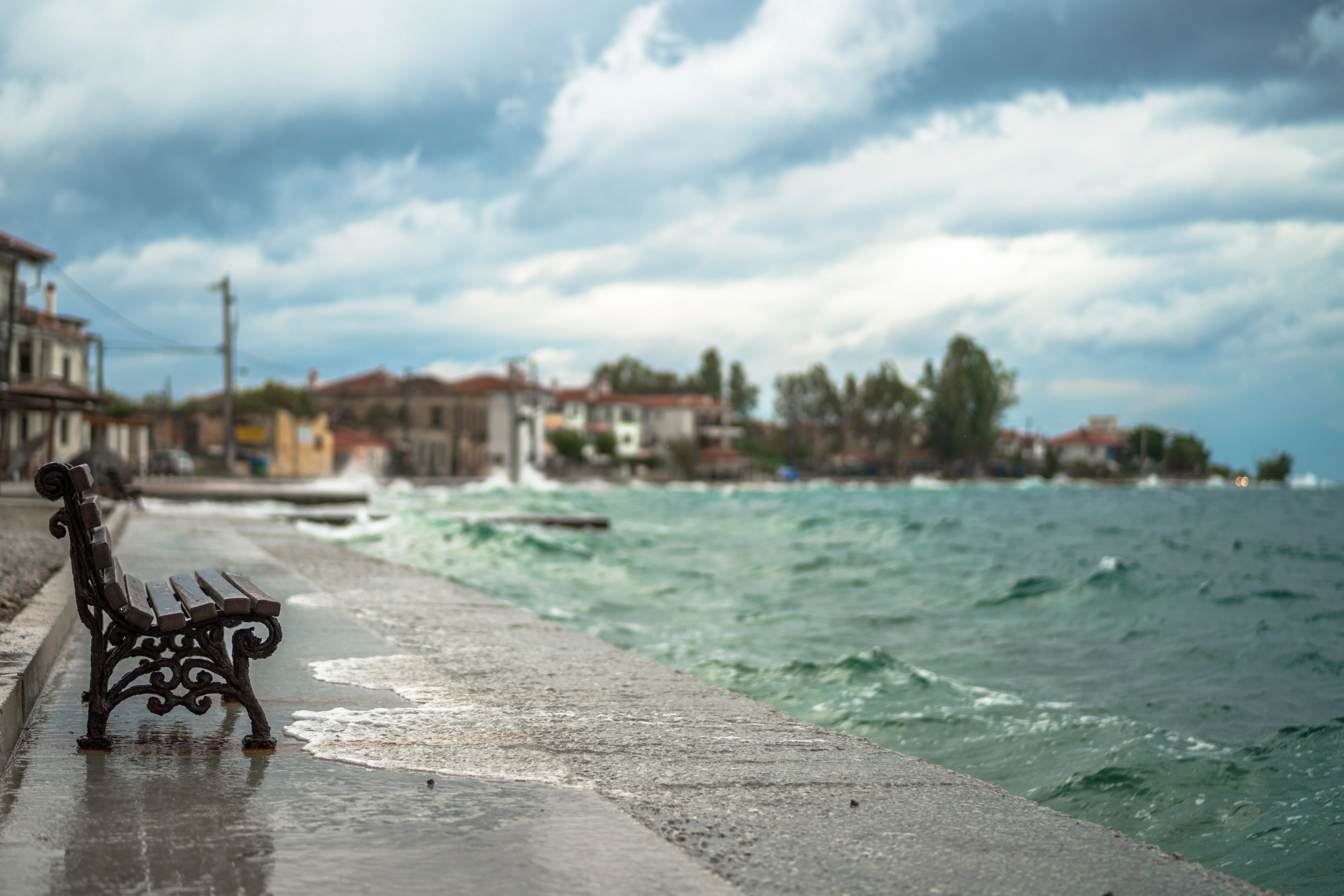
Best Cycling Regions by Season
- Spring: Peloponnese, Cyclades, Crete
- Summer: Ionian Islands, coastal Crete, Northern Greece
- Autumn: All regions — warm seas and balanced conditions
- Winter: Crete
From early spring in the Peloponnese to late autumn in Crete, Greece’s cycling calendar stretches nearly the entire year.
Spring and autumn are the most comfortable seasons, offering stable weather, green hillsides, and quiet roads through olive groves and ancient towns. Summer favors early starts and island routes cooled by Aegean breezes, while winter narrows the season to the southern coastlines.
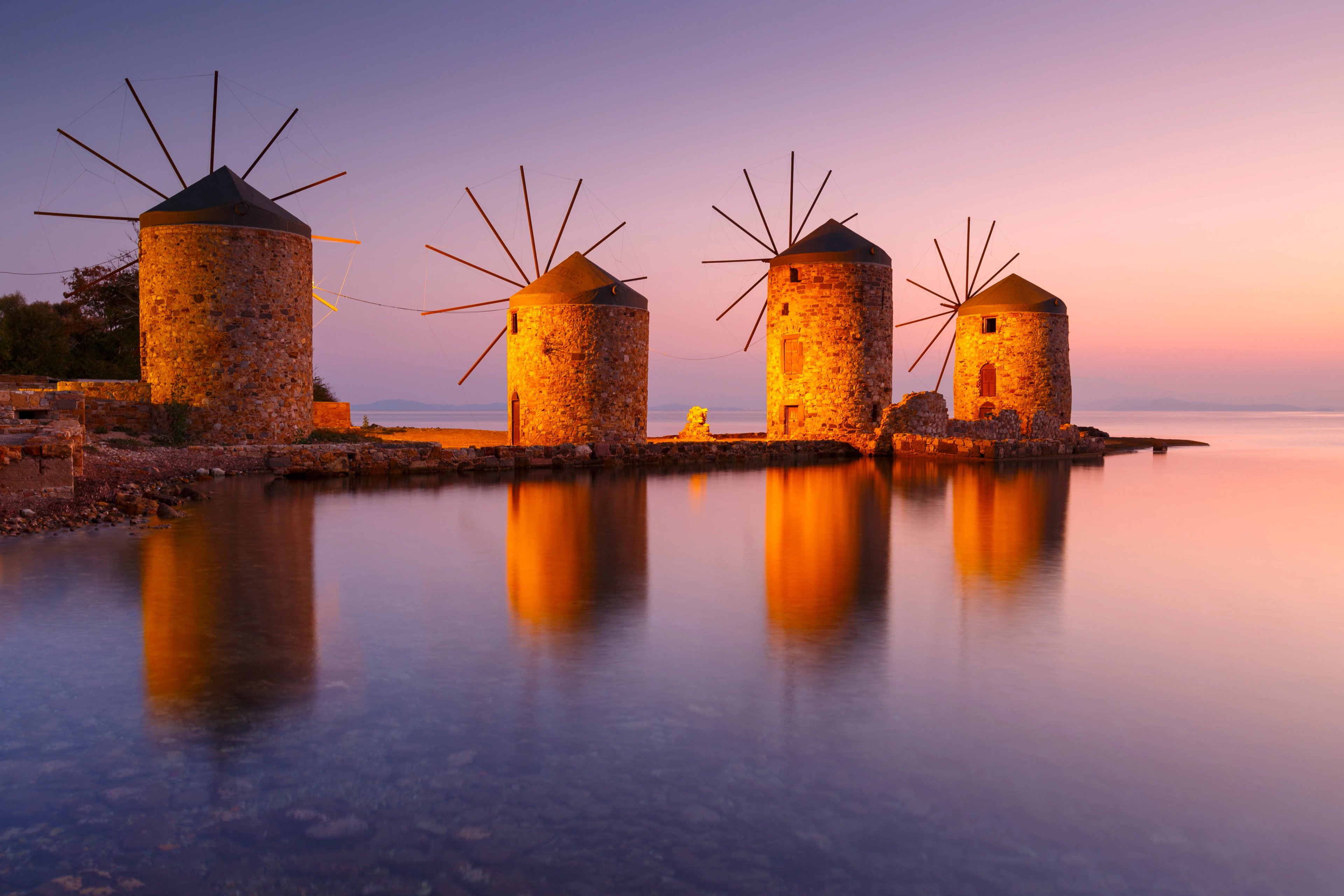
Month-by-Month Breakdown
Here is a closer look at how the seasons unfold across Greece’s cycling year — from the quiet bloom of spring to the warm, golden calm of autumn.
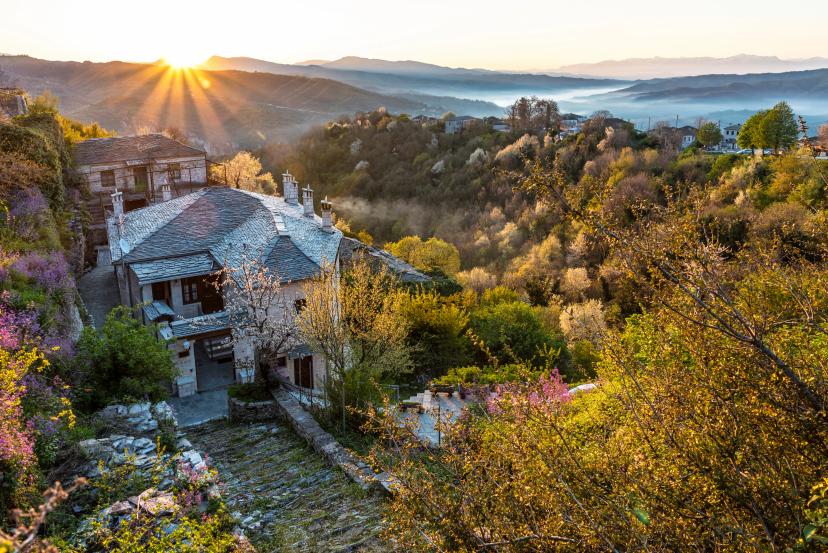
March
March marks the quiet beginning of Greece’s cycling season, when hillsides burst into bloom and roads are still empty of tourists. Daytime highs average 16–20 °C, ideal for gentle rides through the Peloponnese or along Crete’s southern coast. Rain showers are possible but brief, and countryside air feels crisp and clean after winter. For cyclists seeking peaceful routes and authentic encounters, it’s the perfect soft start to the year.
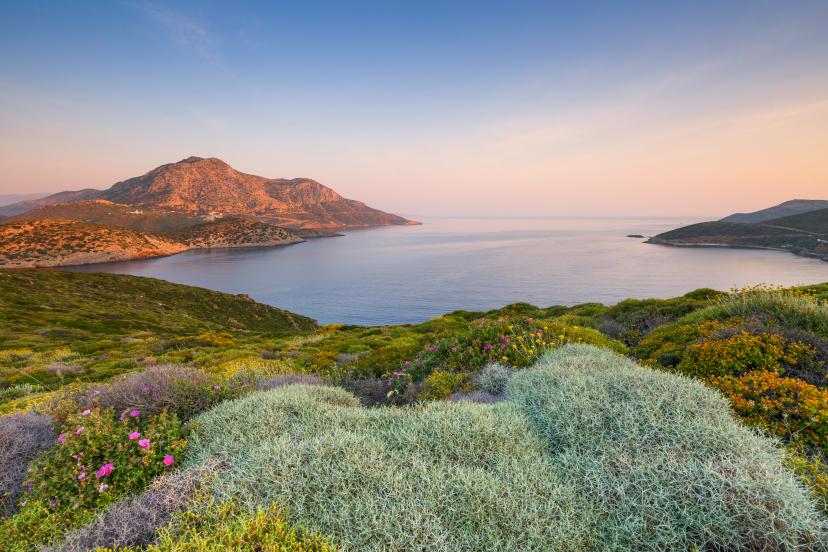
April
April brings the first real warmth of spring, with 18–24 °C days and landscapes covered in wildflowers. Ferries resume frequent service between the islands, and coastal cafés reopen after winter. Conditions are perfect across the Cyclades and Ionian Islands, where rolling hills and light breezes set the tone for easy rides. It’s one of the most photogenic months to explore Greece by bike — green valleys, calm seas, and clear light all day long.

May
May is the golden month for cycling in Greece — long days, mild temperatures, and vibrant colors everywhere. Expect 22–28 °C highs, steady sunshine, and 14 hours of daylight across both mainland and island routes. The sea has warmed enough for post-ride swims, and local markets overflow with early summer produce. From Crete’s gorges to Naxos’ farm roads, every route feels alive and perfectly balanced between comfort and adventure.
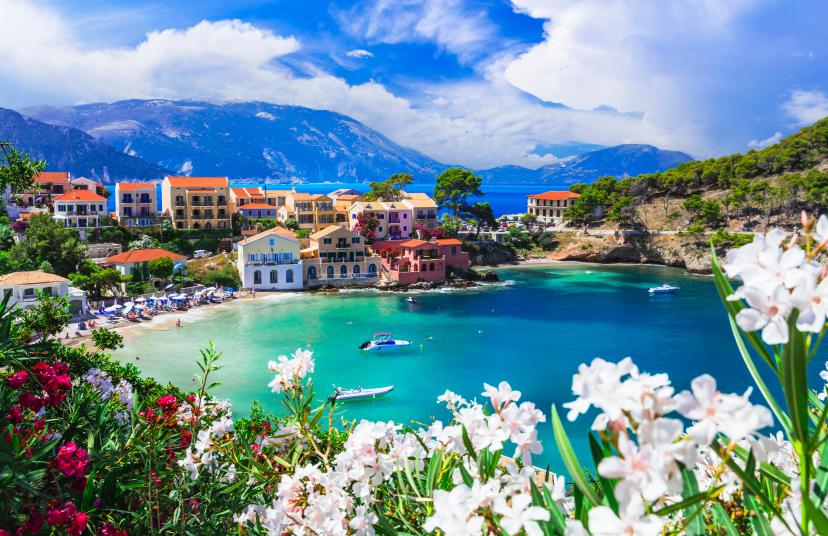
June
June ushers in full summer light, with 25–32 °C afternoons and bright mornings made for cycling. Sea breezes keep the Cyclades and Ionian Islands comfortable, while mainland routes glow with golden fields. It’s the month for early starts, shaded lunch breaks, and long descents toward turquoise bays. Cyclists find the best of both worlds — summer atmosphere without the peak-season crowds.
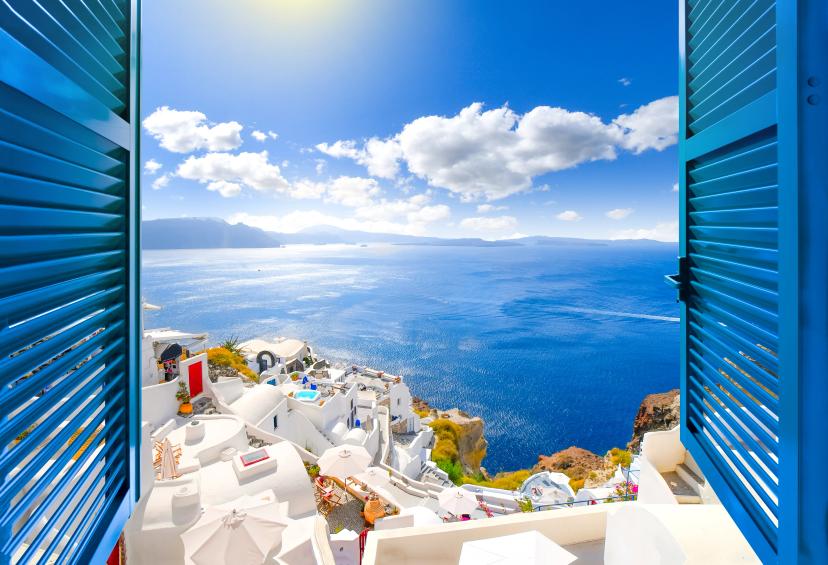
July
July is warm, lively, and unmistakably Mediterranean, with 30–36 °C highs inland and cooler conditions by the sea. It’s best for coastal and island rides where the Aegean winds bring natural relief. Early mornings and evening spins offer perfect light and quiet roads, followed by long mid-day siestas. Plan carefully around the heat, and the reward is endless blue horizons and vibrant island life in full swing.
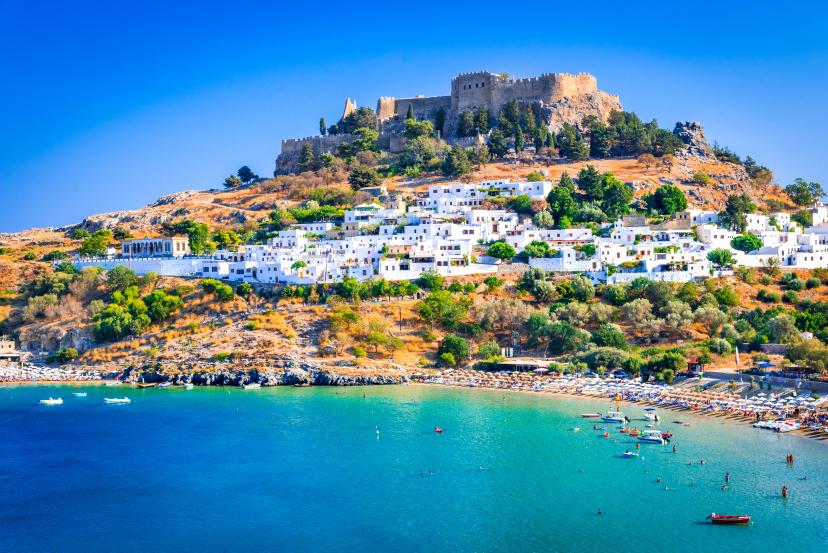
August
August continues the high-summer rhythm with long, sunny days and 32–37 °C highs. Villages celebrate harvests and patron festivals, adding color and music to evening rides. The islands stay breezy, making Cyclades and Crete ideal for short, scenic stages. It’s the liveliest month of the year — best enjoyed at a relaxed pace, with plenty of sea swims between rides.
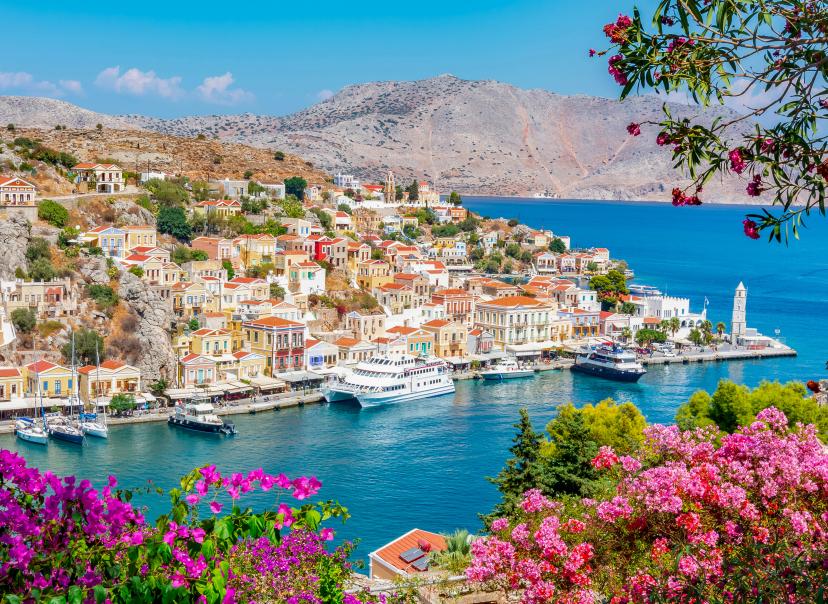
September
September is often considered Greece’s best cycling month, blending warmth, light, and peace. Temperatures stay around 24–30 °C, the sea remains perfect for swimming, and ferry schedules still run strong. Harvest season fills markets with figs and grapes, and rural routes grow quiet again after summer crowds. It’s an unbeatable mix of stable weather, mellow energy, and authentic Greek hospitality.
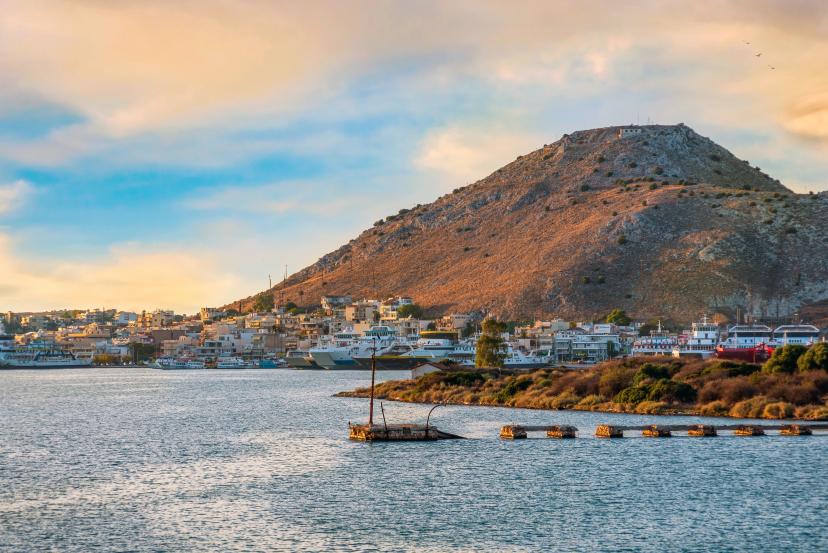
October
October brings gentle sunshine, 20–26 °C highs, and landscapes turning golden with autumn tones. Mainland routes through Sparta, Delphi, and Arcadia shine at this time of year, with calm winds and light traffic. The islands begin to quiet, yet temperatures stay warm enough for outdoor meals and coastal rides. It’s a month for slower travel, open vistas, and that last touch of Mediterranean summer.
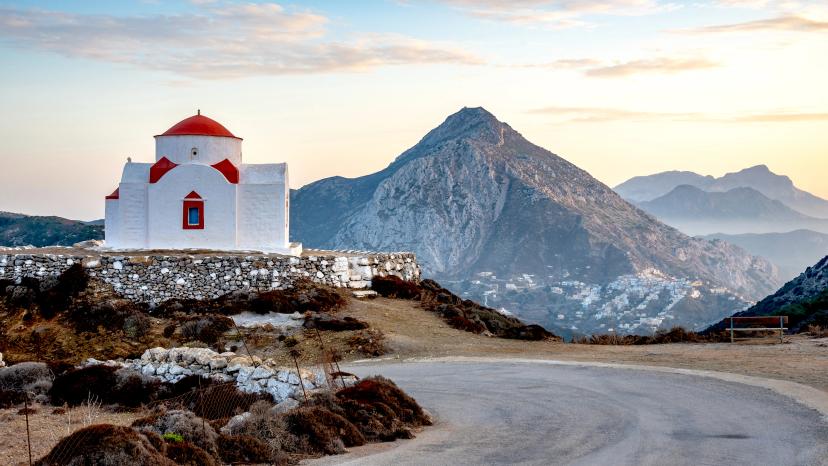
November
November signals the peaceful close of the cycling season, with 17–22 °C days in the south. Crete and the Peloponnese remain welcoming, offering quiet roads and a relaxed pace. Rain becomes more frequent, but bright intervals reveal vivid autumn landscapes and uncrowded villages. For e-bike touring and photography, it’s one of Greece’s most underrated months.
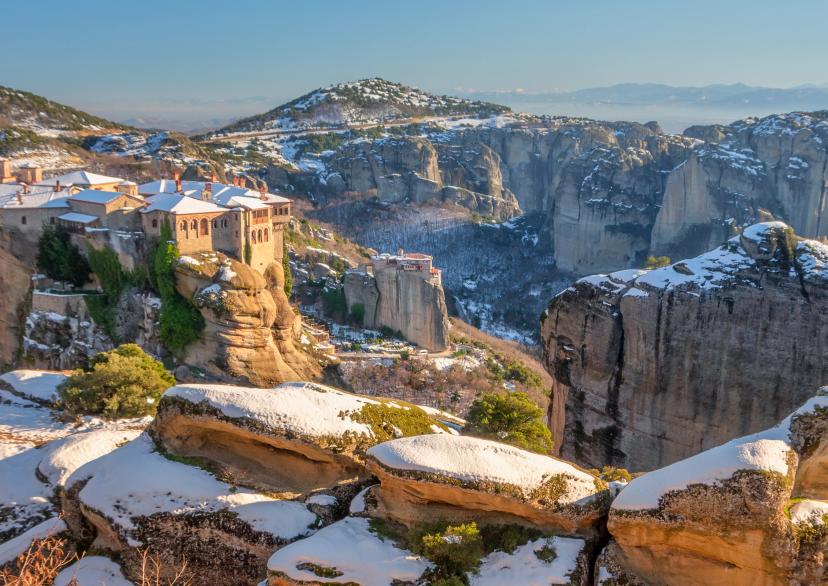
December–February
Winter in Greece is mild compared to northern Europe, with southern regions averaging 12–18 °C. Frequent rain (with possibilities of snow in the Peloponnese region) and wind can make long tours challenging, yet Crete’s south coast often stays bright and rideable. Daylight lasts about ten hours, allowing short scenic rides along citrus groves and quiet beaches. While the rest of Europe sleeps, dedicated cyclists find off-season calm and true Mediterranean solitude.
Best Time to Ride by Region
1. Cyclades Islands (Santorini, Paros, Naxos)

- Climate: Dry and breezy Mediterranean with strong summer winds
- Best Time: April–June, September–October
- What to Expect: Clear skies, warm temperatures around 22–28 °C, and vivid island colors. Ideal ferry links make multi-island routes easy to plan.
- What to Watch Out For: The Meltemi wind peaks in July–August, bringing gusty afternoons on exposed roads.
Pro Tip: Late May and September bring lighter winds and fewer crowds — ideal for quieter ferry crossings and uncrowded island roads.
2. Ionian Islands (Corfu, Kefalonia, Lefkada)
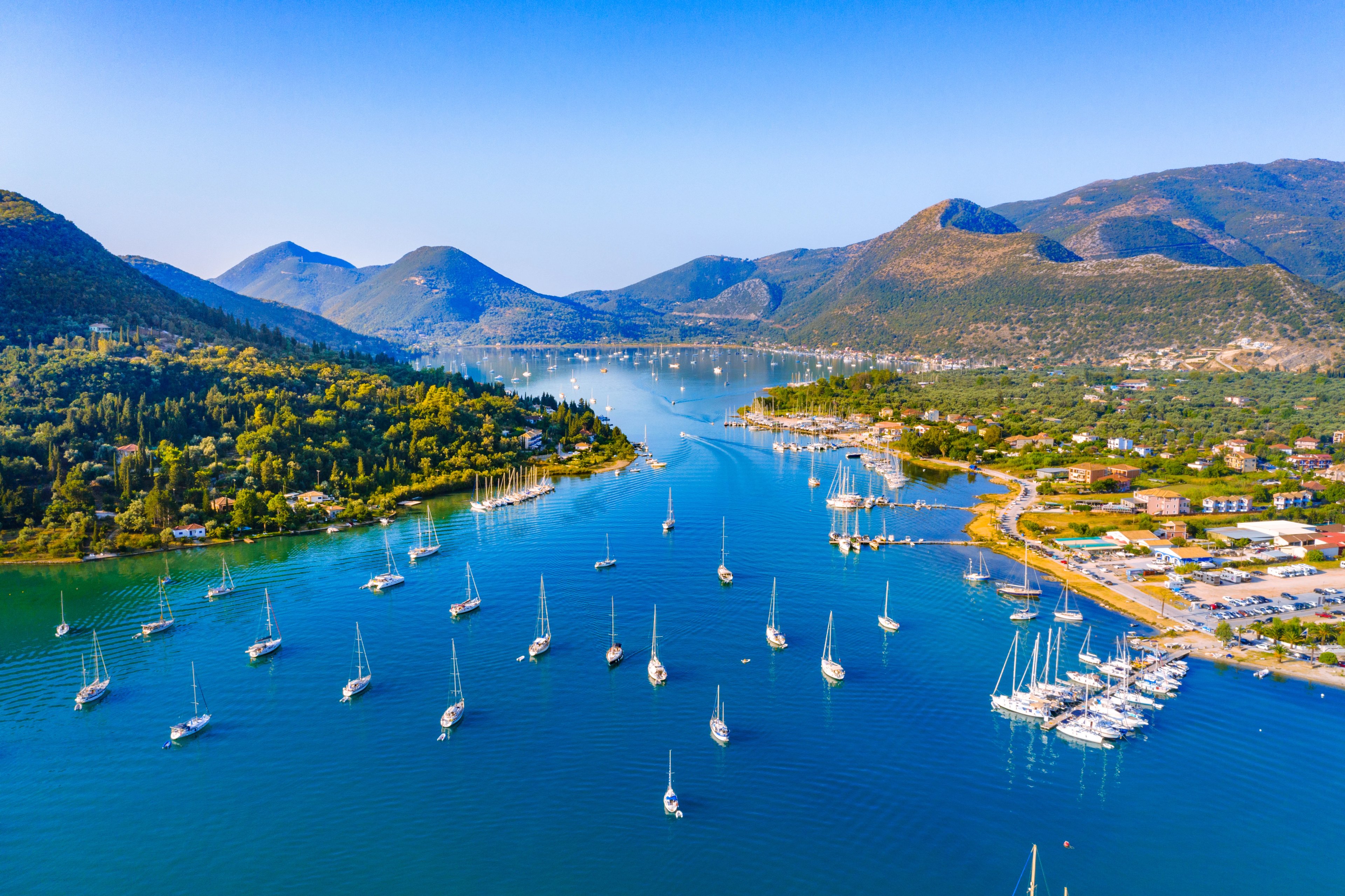
- Climate: Mild and humid, with lush vegetation and gentle coastal breezes
- Best Time: April–June, September
- What to Expect: Green hills, turquoise coves, and light winds — a calm contrast to the Aegean. Spring wildflowers and autumn sunsets add vivid color to coastal routes.
- What to Watch Out For: Mid-winter brings rain and fewer ferry connections.
Pro Tip: Many coastal roads lack shade; start rides before 9 a.m. to enjoy cooler air and quieter traffic.
3. Peloponnese (Sparta, Nafplio, Kalamata)
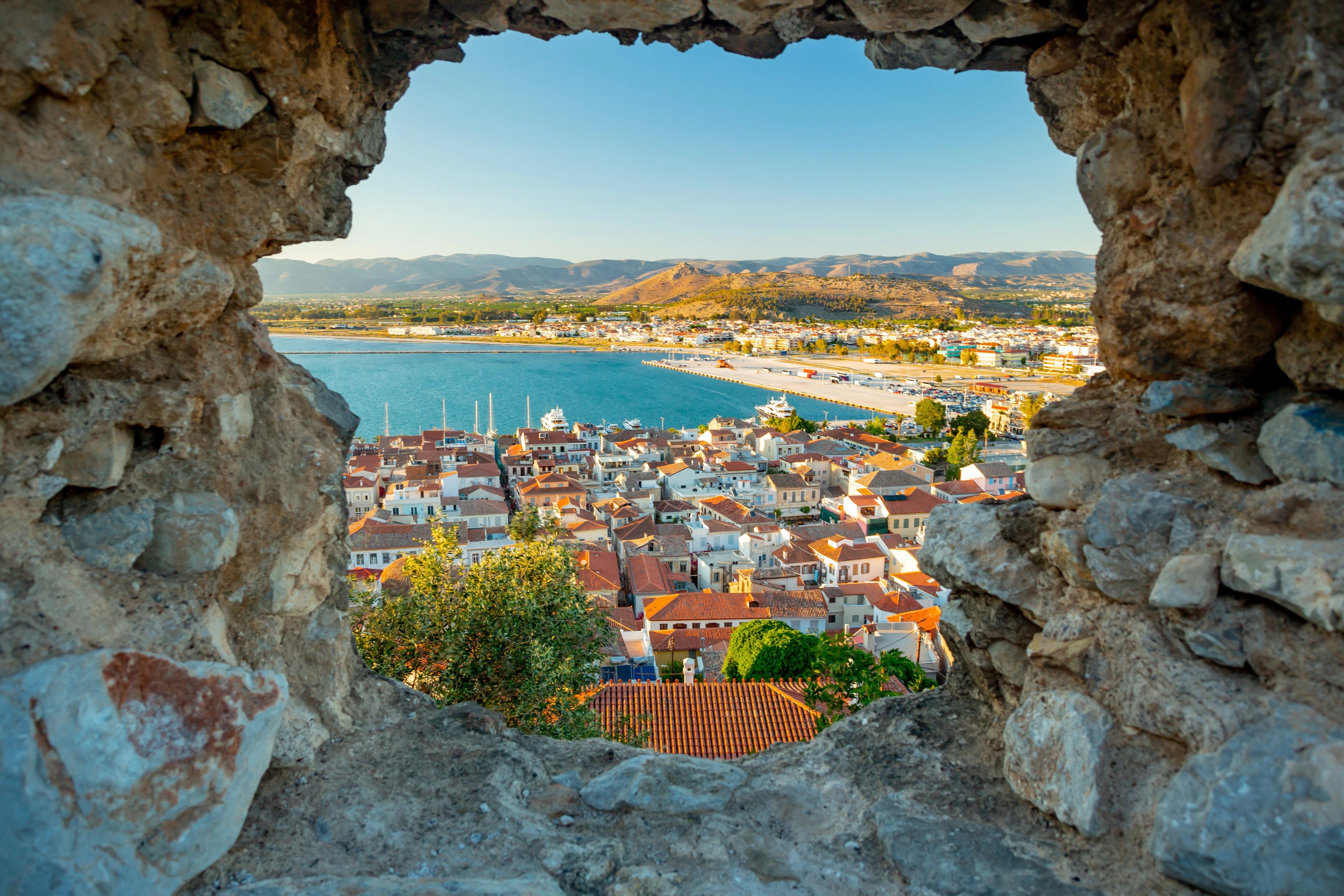
- Climate: Warm Mediterranean with dry summers and mild winters
- Best Time: March–June, September–November
- What to Expect: Long shoulder seasons, quiet country roads, and diverse landscapes from olive groves to mountain gorges.
- What to Watch Out For: July–August inland heat can exceed 35 °C, so early starts are best.
Pro Tip: Late October coincides with olive harvests and local festivals that add an authentic cultural highlight to your bike tour.
4. Crete
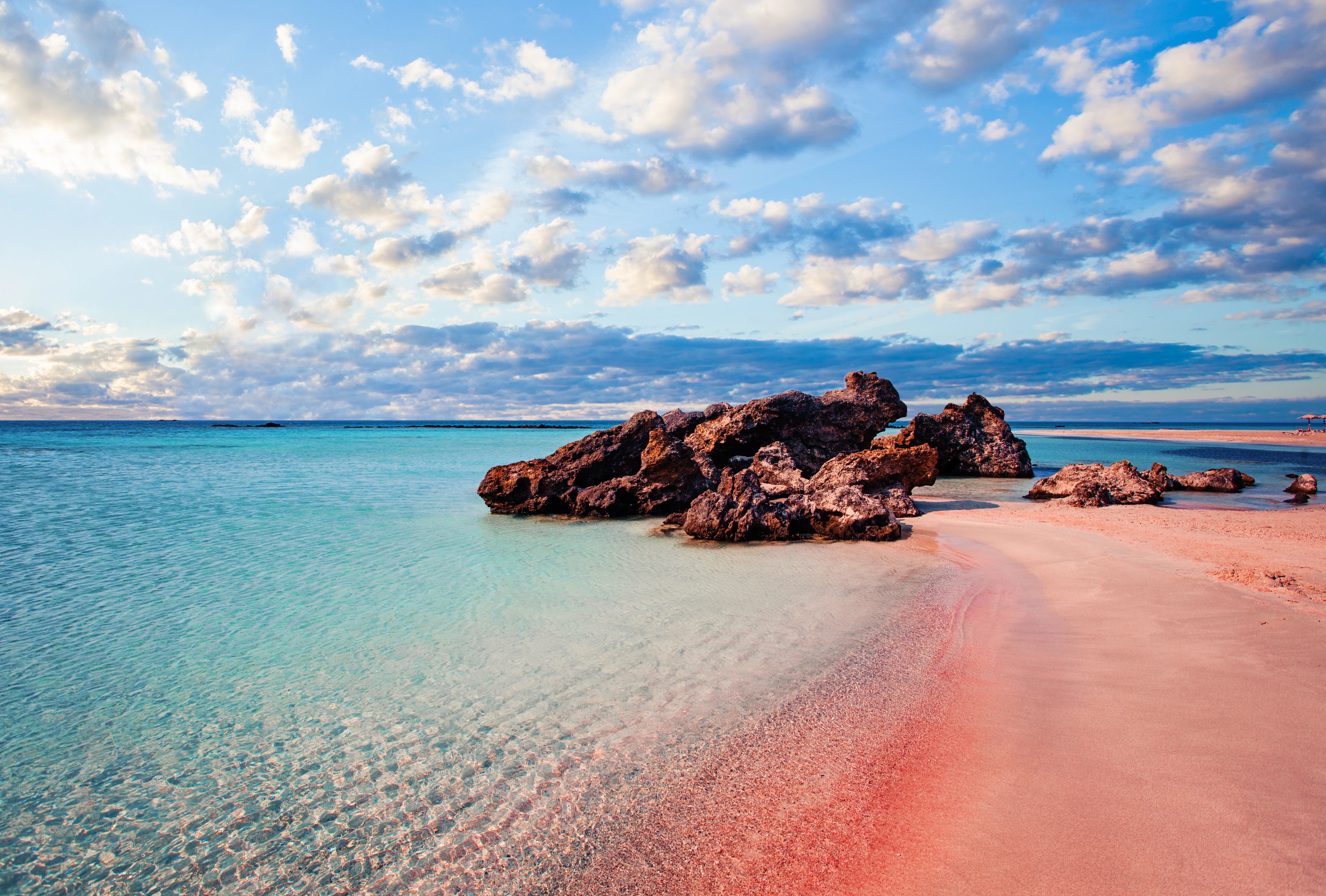
- Climate: Warm, dry, and sunny — the longest cycling season in Greece
- Best Time: March–June, September–November
- What to Expect: Dramatic climbs, long coastal descents, and routes that stay rideable almost year-round. Spring brings wild herbs and flowers; autumn offers calm seas and golden light.
- What to Watch Out For: Winter storms in the north, though the southern coast remains cycleable even in December.
Pro Tip: Autumn rides combine sunshine, clear air, and harvest-season energy — ideal for longer tours.
5. Northern Greece (Meteora, Olympus, Epirus)
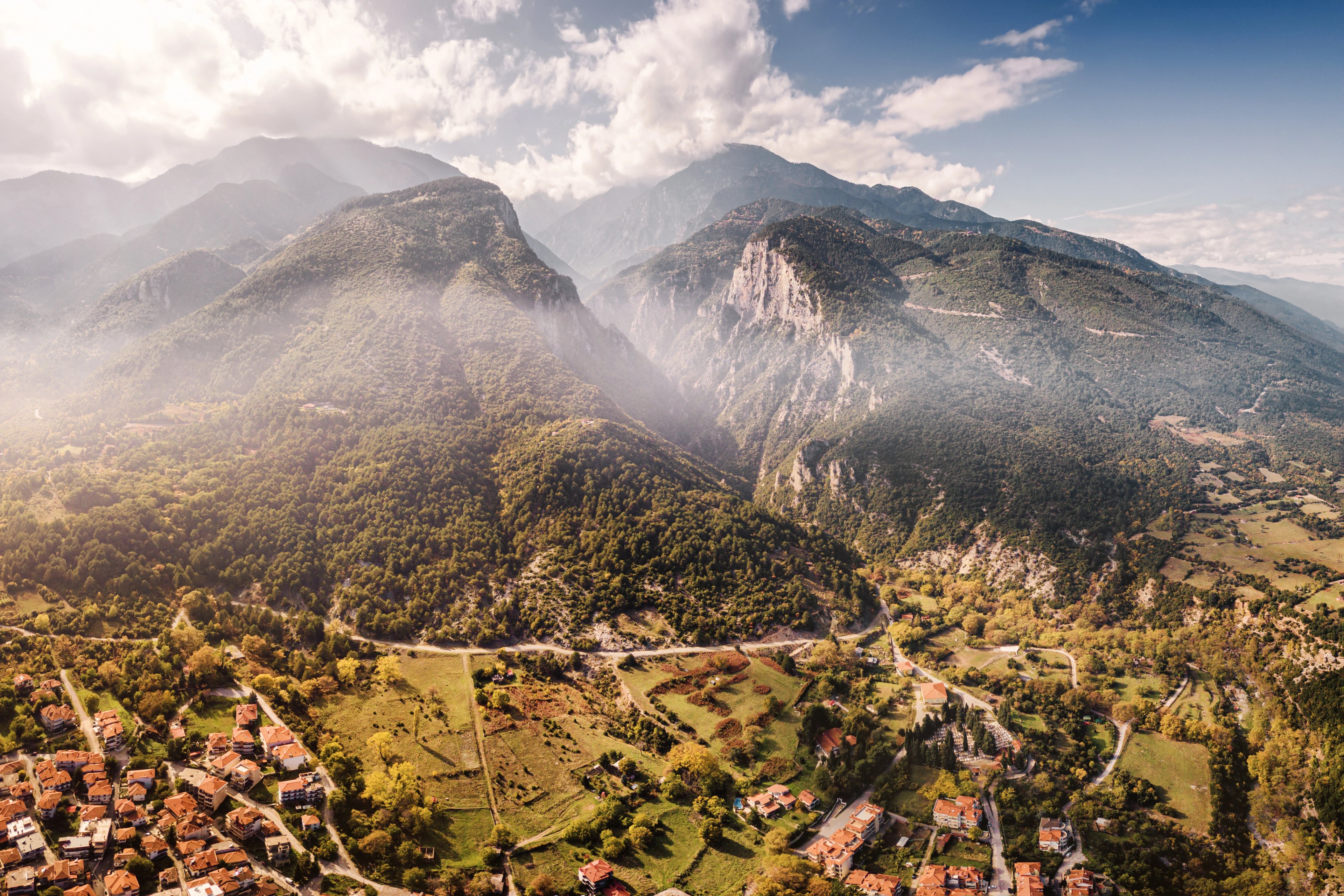
- Climate: Mountain-influenced, cooler and greener than the south
- Best Time: May–September
- What to Expect: Crisp mornings, green valleys, and mild summer highs around 24–28 °C. The region’s rivers, forests, and monasteries make for scenic, peaceful routes.
- What to Watch Out For: Early spring chill and occasional summer storms in alpine areas.
Pro Tip: June and early September offer clear skies, long days, and minimal traffic — the sweet spot for exploring the north.
Seasonal Factors to Consider
- Rainfall: Minimal from May to September; short, heavy showers possible in spring and autumn.
- Wind: The Meltemi blows across the Aegean in July–August — strong in the Cyclades, moderate elsewhere.
- Daylight: Up to 14–15 hours in June, dropping to 9 hours in December.
- Heat: Inland areas exceed 35 °C in midsummer; e-bikes and early starts are recommended.
- Sea Conditions: Ferry schedules taper from late October to March — check before planning cross-island routes.
Worst Season to Ride: December–February
- Average daytime temperatures: 12–18 °C in southern Crete; colder and wetter elsewhere
- Frequent rain, strong winds, and short daylight limit long-distance routes
- Only southern Crete offers mild, rideable conditions — elsewhere, tours pause for winter
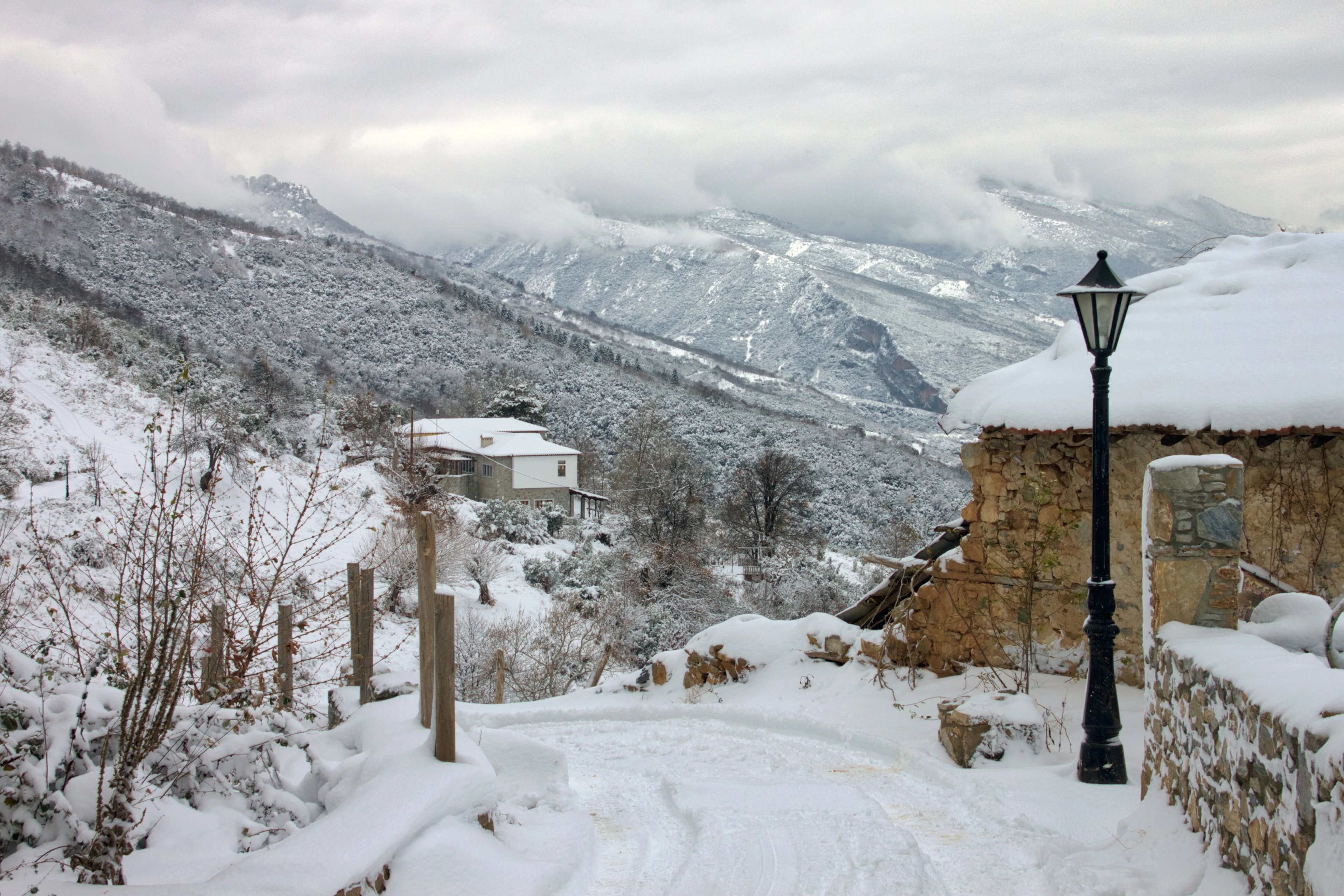
Planning & Forecast Sources
Here are the most useful tools and weather services for cyclists in Greece:
- HNMS (Hellenic National Meteorological Service) – Greece’s official weather authority offering reliable local forecasts, marine bulletins, wind charts, and heat alerts across all regions and islands.
- Meteo.gr (National Observatory of Athens) – Provides detailed daily and 10-day forecasts for major islands, coastal areas, and mountain ranges, with UV index, wind, and rainfall data.
- Weather.com – Covers Greece with hour-by-hour updates, long-range forecasts, and temperature maps that help plan rides during heat waves or Meltemi winds.
- Windy.app – Excellent for monitoring wind speed and direction, especially for island-to-island rides where strong gusts can affect your route or ferry crossings.

All of these services are available in English and work well across mainland Greece and the islands.
Tip: Mountain and island forecasts can differ sharply — always check local updates before long climbs or inter-island transfers.
Timing Is Everything
Greece rewards cyclists who follow the rhythm of its seasons. Spring and autumn bring the perfect balance — warm days, quiet roads, and vivid landscapes — while summer favors early rides and breezy island loops. With smart planning, every region feels like a discovery under endless Mediterranean light.
Explore our route guide for Greece for more ideas on where to ride next.

Hassle-Free
We handle itineraries, accommodations, and anything else you prefer not to deal with, so you can enjoy a carefree holiday.

Completely Customizable
Flexibility is our middle name — whether you want more or less, or just beyond ordinary, we’ll make it happen.

Book with confidence
We are a financially protected company, fully bonded and insured, keeping your money safe and allowing you to travel with confidence.

Unbeatable support
Our 24/7 customer support is where we show our passion, bringing you a better experience by making your well-being our number one priority.
.jpg&w=3840&q=75)
